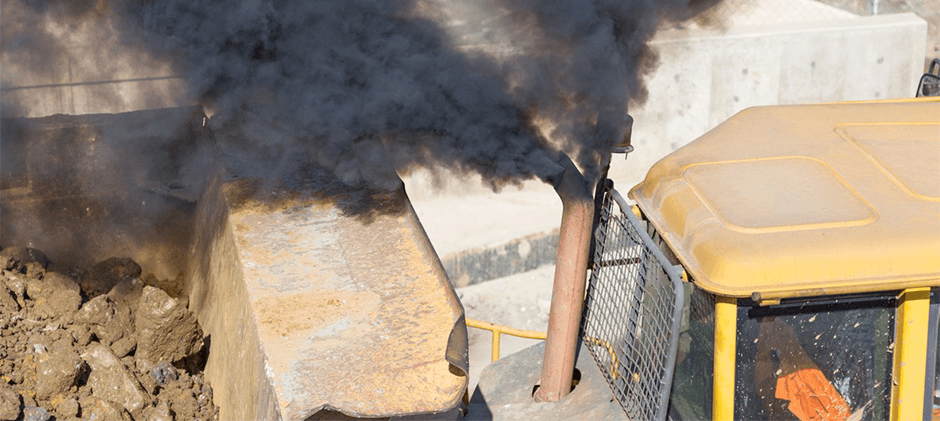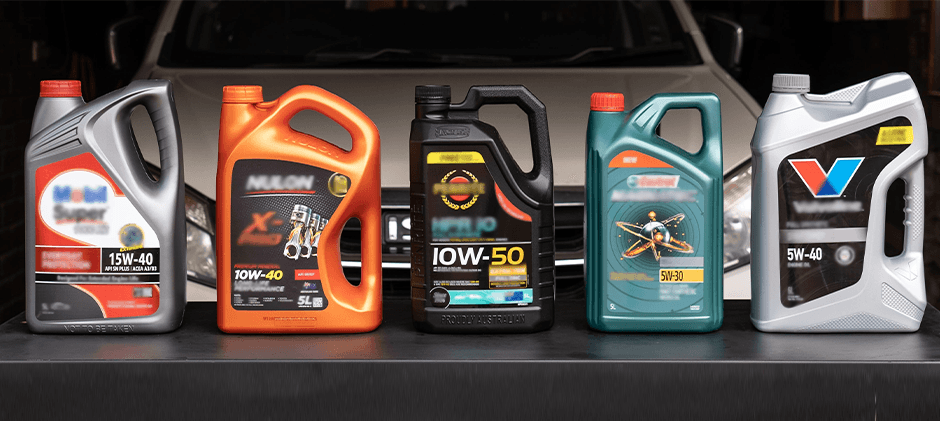Is your equipment suddenly thirsty for oil? If you’re constantly topping off between scheduled changes, your engine burning oil could be the culprit. Excessive oil consumption isn’t just annoying—it’s a warning sign that may help you avoid costly repairs down the road. At FridayParts, we’ve seen countless machines struggle with oil issues, and we’re here to help you understand why your engine might be drinking oil like it’s going out of style.
Worn-Out Piston Rings
Piston rings create a seal between the piston and cylinder wall, keeping oil in the crankcase where it belongs. When these rings wear out or get stuck, oil sneaks past them and burns in the combustion chamber. You’ll notice blue smoke from your exhaust, especially during startup or acceleration.
Think of piston rings like the rubber seal on your refrigerator door—when they wear out, what’s supposed to stay inside escapes. These tiny components have a big job, sealing in both oil and compression. Over time, they naturally wear down from the constant friction and heat they endure.
Replacing piston rings isn’t a quick fix—it usually means an engine teardown. But ignoring the problem leads to poor performance, failed emissions tests, and eventually, complete engine failure. If your equipment is older or has high hours, this is often the culprit behind oil consumption.
Valve Seal Deterioration
Valve seals prevent oil from leaking down the valve guides into the combustion chamber. When these seals harden, crack, or wear out with age, oil gradually seeps into places it shouldn’t be. The classic symptom? A puff of blue smoke when you start your engine after it’s been sitting overnight or when you accelerate after idling.
Unlike piston rings, valve seals don’t require a complete engine teardown to replace, though it’s still a significant job. The good news? Fresh valve seals can make a world of difference in oil consumption if they’re the source of your problem.
Many operators mistake valve seal issues for piston ring problems. The key difference is when you see the smoke—valve seal leaks typically show up on startup, while piston ring issues produce continuous smoke during operation.

Clogged PCV System
The Positive Crankcase Ventilation (PCV) system regulates pressure inside your engine by redirecting blow-by gases back into the intake system. When this system gets clogged with sludge or carbon deposits, pressure builds up inside the crankcase, forcing oil past seals and gaskets.
A clogged PCV system is like having a blocked chimney—the pressure has to go somewhere, and that somewhere is usually through the path of least resistance. This pressure can force oil past even healthy seals and gaskets.
The fix for this is usually straightforward and affordable—cleaning or replacing the PCV valve and associated hoses. Regular maintenance of the PCV system can prevent this issue entirely. Many operators overlook this simple fix and jump straight to more expensive repairs when a quick PCV service might solve their oil consumption problems.
Oil Leaks
Sometimes, excessive oil consumption isn’t about burning oil at all—it’s simply leaking out before it gets a chance to do its job. Common leak points include the oil pan gasket, valve cover gasket, timing cover seal, and rear main seal. You’ll spot wet, oily patches under your equipment or on engine components.
Oil leaks can be sneaky. What looks like minimal seepage can actually add up to significant oil loss over time. A leak that drops just one drop every few minutes can empty a quart of oil in a week of operation.
The severity of the fix depends entirely on the leak’s location. Some gaskets, like the valve cover, are relatively easy to replace. Others, like the rear main seal, require significant disassembly. Either way, it’s best not to ignore even small leaks—they rarely get better on their own and can lead to environmental issues and safety hazards.
Incorrect Oil Viscosity
Using oil that’s too thin for your engine can lead to excessive consumption, especially in high-temperature or high-load conditions. Modern engines are designed with specific oil requirements in mind, and deviating from these can cause problems.
Using the correct viscosity is crucial—think of it like wearing the right shoes for a specific sport. You wouldn’t wear flip-flops to play basketball, and you shouldn’t use 5W-20 in an engine that calls for 15W-40.
Climate also plays a role here. Hotter operating environments might require a higher viscosity oil to maintain proper lubrication. Always check your equipment’s manual for the recommended oil grade and adjust according to your operating conditions.
The good news? This is the easiest fix on our list. Simply drain the incorrect oil and refill with the proper viscosity. Just be aware that if you’ve been running the wrong oil for a long time, you might have caused accelerated wear to engine components.

High Engine Temperature
Overheating engines often lead to engine burning oil, because high temperatures thin out the oil and break down its protective properties. Common causes include cooling system problems, a stuck thermostat, or operating in extreme conditions without proper cooling.
Heat is oil’s enemy. For every 20°F increase in operating temperature, the rate of oxidation (which breaks down oil) doubles. This means oil degradation accelerates dramatically in an overheating engine.
Fix your cooling system issues first—check for radiator blockages, failing water pumps, or faulty temperature regulators. Then, ensure you’re using high-quality oil that can better withstand temperature extremes. In extreme operating conditions, consider more frequent oil changes to keep fresh lubricant in the system.
Engine Blow-by
Blow-by occurs when combustion gases leak past the piston rings into the crankcase. These gases pressurize the crankcase and can carry oil particles into the PCV system and ultimately into the combustion chamber, where they burn.
As engines age, some blow-by is normal. But excessive blow-by indicates significant wear in your cylinder walls, pistons, or rings. You might notice increased crankcase pressure, oil being pushed into the air filter, or contaminated oil that looks milky or frothy.
Unfortunately, significant blow-by usually means it’s time for major engine work. Cylinder honing, new pistons, and new rings are often required. However, for equipment that’s otherwise in good condition, this rebuild can be worth it compared to the cost of replacement.
Turbocharger Issues
If your equipment has a turbocharger, worn turbo seals can let oil seep into the intake or exhaust system. This oil gets burned during combustion, leading to blue smoke and declining oil levels. Turbochargers spin at incredibly high speeds (sometimes over 100,000 RPM) while being exposed to extreme heat from exhaust gases, making their seals particularly vulnerable to wear.
Turbo-related oil consumption often gets worse under load when the turbo is working hardest. You might notice oil-fouled air filters or excessive smoke when your engine is working hard.
Turbo repairs or your turbo replacement can be expensive, but far less costly than replacing an entire engine. Proper warm-up and cool-down periods can extend turbocharger life significantly, as can using high-quality oil designed for turbocharged applications.
Extended Oil Change Intervals
Stretching oil change intervals beyond manufacturer recommendations can lead to oil breakdown, which increases consumption. As oil ages, it loses its ability to properly lubricate and can thin out or develop sludge—both scenarios lead to increased consumption.
Some operators try to save money by extending oil change intervals, but this often backfires. Modern oils are better than ever, but they still have limits. Once oil begins to break down, engine wear accelerates rapidly.
Stick to the manufacturer’s recommended oil change intervals—or even shorten them if you operate in dusty, dirty, or extreme temperature environments. The cost of regular oil changes is minimal compared to the cost of premature engine wear or failure.
Old Engine Design
Some older diesel engine designs, particularly those from pre-emissions eras, were built with looser tolerances and different piston ring designs that naturally allowed for higher oil consumption.
What might seem excessive by today’s standards (less than 1% of fuel consumption) was considered normal for these workhorses. If you’re operating legacy equipment, you may need to adjust your expectations. These engines might always use more oil than their modern counterparts, even when in perfect working condition.
Rather than fighting an uphill battle, consider keeping a close eye on oil levels and topping off regularly. For critical vintage equipment, setting up an oil analysis program can help you monitor engine health despite the oil consumption.
FAQs About Excessive Oil Consumption
How Much Oil Consumption Is Actually Normal?
Most modern engines should use less than 1 quart of oil per 1,000 miles or 25 hours of operation. However, this varies by equipment type and age. Check your owner’s manual for specific guidelines. Some heavy equipment manufacturers consider consumption of up to 1 quart per 10 hours normal under heavy load conditions.
Can Using Synthetic Oil Reduce Oil Consumption?
Yes, synthetic oils often reduce consumption because they resist breakdown and thinning at high temperatures better than conventional oils. However, if your equipment has worn seals or gaskets, the smaller molecules in synthetic oil might actually increase leakage in some cases.
Will Thicker Oil Stop My Engine from Burning Oil?
Temporarily, perhaps, but it’s not a real fix. While thicker oil might slow leakage past worn rings or seals, it can cause other problems like reduced oil flow to critical components, increased operating temperatures, and harder cold starts. Always use the manufacturer-recommended viscosity.
Is Black Smoke Related to Oil Consumption?
No, black smoke usually indicates incomplete fuel combustion, not oil burning. Oil consumption typically produces blue or bluish-gray smoke. If you’re seeing black smoke, you likely have a fuel system issue rather than an oil consumption problem.
How Can I Tell If My Engine Is Burning Oil or Leaking It?
Check for oil spots where you park your equipment (leaks), monitor exhaust smoke color (burning oil produces blue smoke), and inspect your air filter for oil contamination. A thorough visual inspection of the engine can often identify external leaks, while burning oil leaves fewer visible clues except through exhaust smoke.
FridayParts knows that maintaining your equipment properly saves you time and money in the long run. Excessive oil consumption is more than just an inconvenience—it’s your engine telling you something’s wrong. By identifying and addressing these issues early, you can extend the life of your equipment and avoid costly downtime.
Need quality replacement engine parts to fix your oil consumption or engine burning oil issues? Check out our extensive selection of engine parts designed to keep your equipment running smoothly for years to come.
Remember, a well-maintained engine doesn’t just run better—it saves you money on fuel, reduces emissions, and provides reliable service when you need it most. Don’t ignore the warning signs of excessive oil consumption; address them promptly and keep your operation running smoothly.
